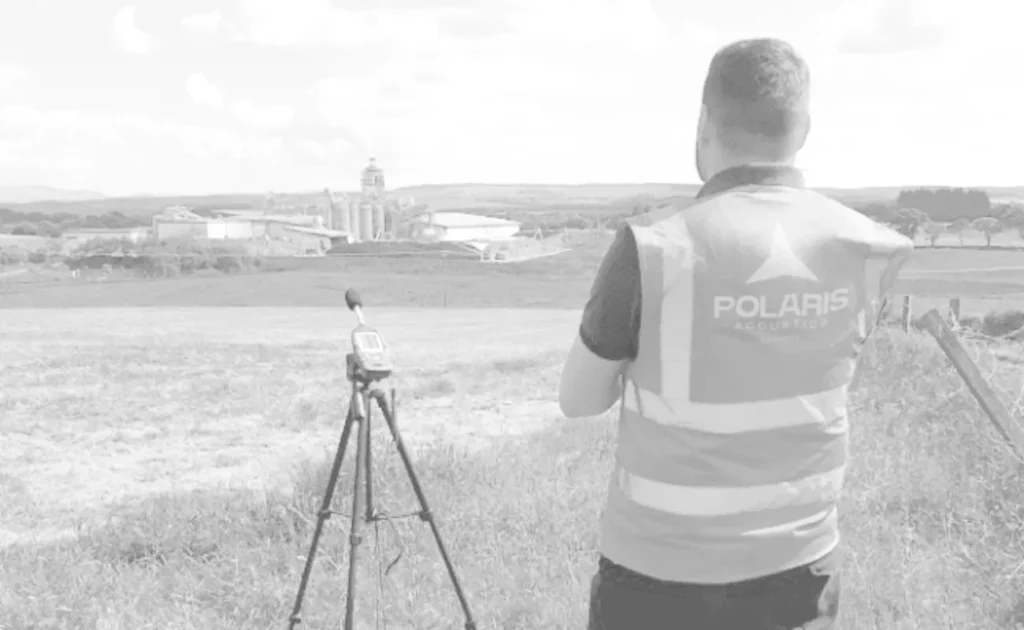When submitting a planning application in the UK, one document often proves crucial but easily overlooked: the noise report. Understanding how noise reports and planning policy intersect is essential for developers, consultants, and environmental professionals alike. Without this knowledge, projects may face avoidable delays or rejections.

Why Are Noise Reports Important in Planning?
Noise can significantly impact the suitability of a site for development. As such, local authorities often require noise assessments as part of planning applications, especially for:
- Residential developments near busy roads, railways, or industrial zones
- Mixed-use developments combining commercial and residential space
- Night-time economy proposals (e.g. pubs, clubs, or live music venues)
Noise reports ensure that new developments meet national and local planning policy requirements, promoting good acoustic design and protecting future residents from excessive noise exposure.
What Planning Policy Says About Noise
The National Planning Policy Framework (NPPF) sets out the government’s stance on noise. Paragraph 185 of the NPPF requires that planning decisions:
- Avoid noise giving rise to significant adverse impacts on health and quality of life
- Mitigate and reduce noise impacts through proper design
- Identify and protect areas of tranquillity
Local planning authorities (LPAs) supplement the NPPF with local development plans and noise-specific supplementary planning documents (SPDs). These often require a professional noise report to support the application.
What Does a Noise Report Include?
A compliant noise assessment will typically feature:
- Baseline Survey – Measuring existing noise levels on-site using Class 1 sound level meters.
- Noise Modelling – Predicting future noise impacts from roads, rail, or industrial sources.
- Mitigation Proposals – Recommending solutions like acoustic glazing, barriers, or layout changes.
- Compliance Check – Comparing levels with BS8233, ProPG, and other relevant guidelines.
The report should be carried out by a qualified acoustic consultant, usually a member of the Institute of Acoustics (IoA).
When Is a Noise Report Needed?
You’ll typically need a noise report if your project falls into one of these categories:
- Near Transport Routes: Proximity to A-roads, train lines, or airports
- Industrial Neighbours: Sites adjacent to factories or workshops
- Mixed-Use Plans: Commercial units below or beside flats
- Night-Time Uses: Restaurants, bars, or leisure venues open late
Always check your local authority’s validation checklist. Many LPAs will not register an application without a valid noise report that adheres to the relevant planning policy.
Common Mistakes That Lead to Rejections
Avoid these pitfalls when preparing your noise assessment:
- Submitting a generic or desktop-only report
- Failing to address worst-case scenarios (e.g. windows open)
- Omitting mitigation details or acoustic performance specs
- Not referencing local noise policies or SPDs
Getting it wrong can mean costly delays. Worse, it can result in outright refusal.
Best Practices for Developers and Consultants
To stay ahead, follow these practical steps:
- Engage an acoustic consultant early – ideally during pre-application stages
- Integrate acoustic design with architecture – avoid retrofitting solutions
- Factor in future noise sources – like planned roads or developments nearby
- Co-ordinate with other specialists – planners, architects, and engineers
This joined-up approach helps ensure that noise reports and planning policy align seamlessly with your wider submission.
Internal Collaboration Makes All the Difference
A noise report shouldn’t be a last-minute tick-box exercise. Instead, integrate it into your broader design and environmental strategy. You might find useful guidance and technical services on our /services/ page, including environmental assessments tailored to planning policy.
FAQs
What’s the difference between a noise report and an environmental noise survey?
A noise report is a formal planning document. An environmental noise survey refers to the actual on-site measurements used within that report.
Can a planning application be refused due to noise?
Yes. If your noise report is missing, inadequate, or shows unacceptable impacts, the LPA can refuse permission.
Are noise reports always needed for residential planning?
Not always. But if the site is exposed to significant noise sources, you’ll almost certainly need one.
How much does a noise report cost?
Costs vary based on site complexity, location, and urgency. Contact us for a tailored quote via our /contact-us/ page.
Conclusion: Why You Must Understand Noise Reports and Planning Policy
In today’s regulatory climate, knowing how noise reports and planning policy interact is non-negotiable. For developers, consultants, and environmental professionals, these reports are more than just formalities — they’re essential for compliance, good design, and planning success.
Whether you’re at the early design stage or nearing submission, don’t leave acoustics until the last minute. Instead, make noise assessments part of your core planning toolkit.
Ready to talk? Contact us today for tailored guidance or a quote on your next development.




